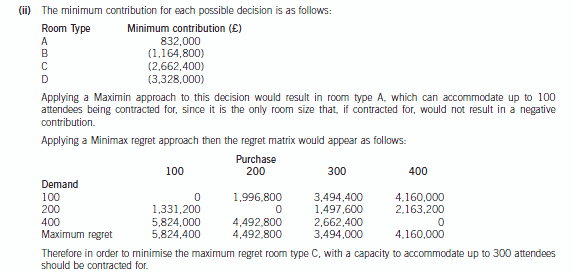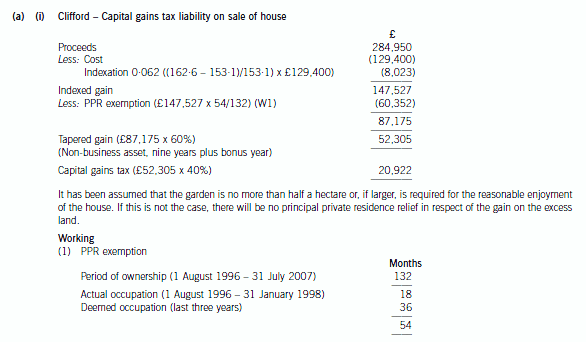2020年甘肃下半年教师资格考试成绩查询时间12月10日起
发布时间:2020-09-05
2020年甘肃下半年教师资格考试成绩查询时间大家了解吗?下面51题库考试学习网就带领大家一起来看看,关于2020年甘肃下半年教师资格考试成绩查询相关内容,报考的小伙伴赶紧来围观吧。
查询成绩
12月10日开始,考生可登录NTCE网站(http://ntce.neea.edu.cn)查询笔试考试成绩。
成绩查询流程
1.登录中小学教师资格考试网,在首页右下角找到“考生服务”;
2.点击“考生服务”中的“成绩查询”按钮,跳入成绩查询界面,填写个人姓名、证件号以及验证码,点击“查询”;
3.查到成绩。
笔试成绩合格标准
教师资格证笔试卷面分满分为150分,按标准转换为120分制的70分为通过。教育部考试中心根据考试标准和当次考试情况,确定各科目全国统一的合格分数线。由于各个科目难度存在差异,其合格分数线不尽相同。为统一各科目的合格分数线,采用线性转换的方法,将考生0~150分量表上的原始成绩换算为0~120分量表上的转换分,并使各科目的合格分数线统一转换为70分。也就是说教师资格证合格分数线为70分。
成绩复核
如对本人考试成绩有异议,可在考试成绩公布后10个工作日内向所属考区市(州)教育考试机构提出复核申请。
成绩有效期
NTCE笔试单科合格成绩2年内有效。有效期内,相应类别NTCE笔试要求的单科成绩全部合格者,方可参加面试。
教师资格考试成绩有效期计算
一般而言甘肃教师资格证保留两年,这个两年从单科取得合格之日起算。教师资格证这个合格之日,一般在教师资格证成绩查询系统有两个时间节点,一个是每年的6月30日,一个是每年的12月31日,参加上半年考试的考生,成绩在6月30日过期,参加下半年考试的考生,成绩在12月31日过期。考生可以登录教师资格证成绩查询系统查询到成绩是否还在有效期内,是否还有保留。参加甘肃教师资格证面试报名需要全部笔试成绩合格,且成绩还在有效期内,教师资格证考试每年下半年的面试报名在12月中上旬,而考试时间到了次年1月,这时候,很多成绩在当年12月31日过期的考生就有了疑问:如果教师资格证笔试成绩在当年12月31日过期,是否还能报考当年下半年的教师资格证面试?这种情况是能报考的,只要在甘肃教师资格证面试报名的时候,你的成绩还在有效期内即可报考,一般下半年的教师资格证面试都是12月中上旬报名,报名时,成绩仍在有效期内。如果成绩已经失效,系统会自动检测到你的成绩无效,不能报名。
以上是本次51题库考试学习网带给大家的关于甘肃教师资格考试成绩查询相关内容,相信大家都清楚了。欲了解更多关于教师资格考试的资讯,敬请关注51题库考试学习网!
下面小编为大家准备了 ACCA考试 的相关考题,供大家学习参考。
(ii) Determine whether your decision in (b)(i) would change if you were to use the Maximin and Minimax
regret decision criteria. Your answer should be supported by relevant workings. (6 marks)

(b) Describe with suitable calculations how the goodwill arising on the acquisition of Briars will be dealt with in
the group financial statements and how the loan to Briars should be treated in the financial statements of
Briars for the year ended 31 May 2006. (9 marks)
(b) IAS21 ‘The Effects of Changes in Foreign Exchange Rates’ requires goodwill arising on the acquisition of a foreign operation
and fair value adjustments to acquired assets and liabilities to be treated as belonging to the foreign operation. They should
be expressed in the functional currency of the foreign operation and translated at the closing rate at each balance sheet date.
Effectively goodwill is treated as a foreign currency asset which is retranslated at the closing rate. In this case the goodwillarising on the acquisition of Briars would be treated as follows:

At 31 May 2006, the goodwill will be retranslated at 2·5 euros to the dollar to give a figure of $4·4 million. Therefore this
will be the figure for goodwill in the balance sheet and an exchange loss of $1·4 million recorded in equity (translation
reserve). The impairment of goodwill will be expensed in profit or loss to the value of $1·2 million. (The closing rate has been
used to translate the impairment; however, there may be an argument for using the average rate.)
The loan to Briars will effectively be classed as a financial liability measured at amortised cost. It is the default category for
financial liabilities that do not meet the definition of financial liabilities at fair value through profit or loss. For most entities,
most financial liabilities will fall into this category. When a financial liability is recognised initially in the balance sheet, the
liability is measured at fair value. Fair value is the amount for which a liability can be settled, between knowledgeable, willing
parties in an arm’s length transaction. In other words, fair value is an actual or estimated transaction price on the reporting
date for a transaction taking place between unrelated parties that have adequate information about the asset or liability being
measured.
Since fair value is a market transaction price, on initial recognition fair value generally is assumed to equal the amount of
consideration paid or received for the financial asset or financial liability. Accordingly, IAS39 specifies that the best evidence
of the fair value of a financial instrument at initial recognition generally is the transaction price. However for longer-term
receivables or payables that do not pay interest or pay a below-market interest, IAS39 does require measurement initially at
the present value of the cash flows to be received or paid.
Thus in Briars financial statements the following entries will be made:

2 Clifford and Amanda, currently aged 54 and 45 respectively, were married on 1 February 1998. Clifford is a higher
rate taxpayer who has realised taxable capital gains in 2007/08 in excess of his capital gains tax annual exemption.
Clifford moved into Amanda’s house in London on the day they were married. Clifford’s own house in Oxford, where
he had lived since acquiring it for £129,400 on 1 August 1996, has been empty since that date although he and
Amanda have used it when visiting friends. Clifford has been offered £284,950 for the Oxford house and has decided
that it is time to sell it. The house has a large garden such that Clifford is also considering an offer for the house and
a part only of the garden. He would then sell the remainder of the garden at a later date as a building plot. His total
sales proceeds will be higher if he sells the property in this way.
Amanda received the following income from quoted investments in 2006/07:
£
Dividends in respect of quoted trading company shares 1,395
Dividends paid by a Real Estate Investment Trust out of tax exempt property income 485
On 1 May 2006, Amanda was granted a 22 year lease of a commercial investment property. She paid the landlord
a premium of £6,900 and also pays rent of £2,100 per month. On 1 June 2006 Amanda granted a nine year
sub-lease of the property. She received a premium of £14,700 and receives rent of £2,100 per month.
On 1 September 2006 Amanda gave quoted shares with a value of £2,200 to a registered charity. She paid broker’s
fees of £115 in respect of the gift.
Amanda began working for Shearer plc, a quoted company, on 1 June 2006 having had a two year break from her
career. She earns an annual salary of £38,600 and was paid a bonus of £5,750 in August 2006 for agreeing to
come and work for the company. On 1 August 2006 Amanda was provided with a fully expensed company car,
including the provision of private petrol, which had a list price when new of £23,400 and a CO2 emissions rate of
187 grams per kilometre. Amanda is required to pay Shearer plc £22 per month in respect of the private use of the
car. In June and July 2006 Amanda used her own car whilst on company business. She drove 720 business miles
during this two month period and was paid 34 pence per mile. Amanda had PAYE of £6,785 deducted from her gross
salary in the tax year 2006/07.
After working for Shearer plc for a full year, Amanda becomes entitled to the following additional benefits:
– The opportunity to purchase a large number of shares in Shearer plc on 1 July 2007 for £3·30 per share. It is
anticipated that the share price on that day will be at least £7·50 per share. The company will make an interestfree
loan to Amanda equal to the cost of the shares to be repaid in two years.
– Exclusive free use of the company sailing boat for one week in August 2007. The sailing boat was purchased by
Shearer plc in January 2005 for use by its senior employees and costs the company £1,400 a week in respect
of its crew and other running expenses.
Required:
(a) (i) Calculate Clifford’s capital gains tax liability for the tax year 2007/08 on the assumption that the Oxford
house together with its entire garden is sold on 31 July 2007 for £284,950. Comment on the relevance
to your calculations of the size of the garden; (5 marks)

(b) (i) Calculate the inheritance tax (IHT) that will be payable if Debbie were to die today (8 June 2005).
Assume that no tax planning measures are taken and that there has been no change in the value of any
of the assets since David’s death. (4 marks)

声明:本文内容由互联网用户自发贡献自行上传,本网站不拥有所有权,未作人工编辑处理,也不承担相关法律责任。如果您发现有涉嫌版权的内容,欢迎发送邮件至:contact@51tk.com 进行举报,并提供相关证据,工作人员会在5个工作日内联系你,一经查实,本站将立刻删除涉嫌侵权内容。
- 2020-04-01
- 2021-04-04
- 2021-04-07
- 2019-01-05
- 2021-04-04
- 2020-08-12
- 2020-09-05
- 2021-05-22
- 2019-01-05
- 2021-04-04
- 2021-01-21
- 2020-09-05
- 2020-10-18
- 2021-04-04
- 2021-04-07
- 2020-09-05
- 2020-09-08
- 2019-01-05
- 2020-01-10
- 2019-01-05
- 2020-10-19
- 2020-01-10
- 2020-09-05
- 2021-04-08
- 2020-01-10
- 2020-04-11
- 2019-03-20
- 2021-04-07
- 2020-10-19
- 2020-04-16